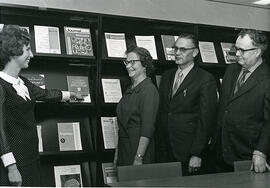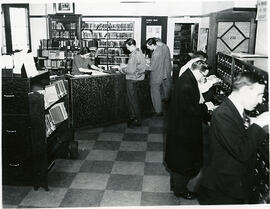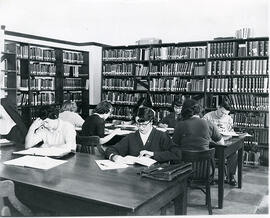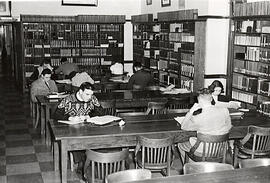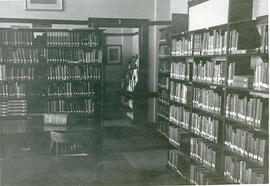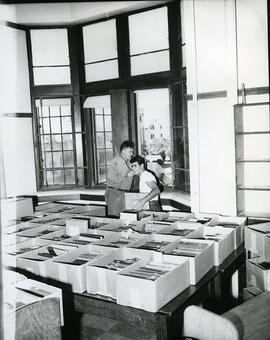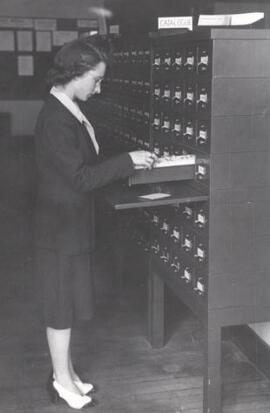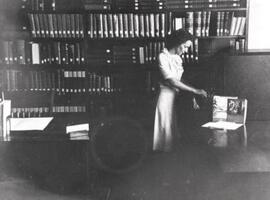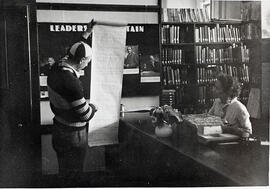Health Sciences Building - Interior
- A-6768
- Item
- 13 Jan. 1971
Standing beside the new Medical Library's current serials stand during official opening of Health Sciences B Wing are (l to r): Sandra Kinloch, medical librarian; Grace Giles, former, and first, medical librarian; Earl Dick, executive director, University Hospital; and Dr. J.E. Leddy, President, University of Windsor, and former dean of Arts and Science (1949-1964) at the U of S.
Bio/Historical Note: In April of 1950, the Medical Library Committee held its first meeting and recommended the creation of a Medical Library as a branch of the University Library. Located in the newly opened Medical Building, it was in operation by the following October. Over the subsequent decades, the Medical Library has grown to meet the demands of all the Health Sciences on campus. In addition to the Library's general collection it houses the Baltzan and Brodie collections on Medical Canadiana and the History of Medicine.
Bio/Historical Note: The oldest wing of the Health Sciences Building, the A Wing, dating to 1949, was originally the Medical College Building. The Health Sciences A Wing has heritage value as the cornerstone of the medical precinct at the university and was designed by architects Webster and Gilbert. The A Wing was renovated and reopened in 2019. The B Wing was completed by 1971.

